Kayaking Crete’s West Coast
As visitors travel down the west coast of Crete to join the madding crowds at Elafonisi, over a thousand a day in high summer, only the discerning and knowledgeable will turn off the main road to seek out the quieter and less frequented locations of Voulolimni, Aspri Limni, and the small harbour of Agios Nikolaus.
Between these is the monastery at Chrysoskalitissa, which has a stream of visitors, all searching futilely for the Golden Step. The monastery is signed and easily located, but the others require some searching out.
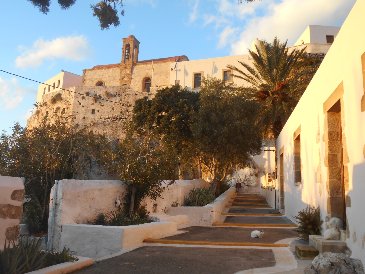
Approaching from the north, the first of these four locations is Voulolimni (‘sunken lake’). Before the monastery turning, take a track right (marked ‘Panorama’), bear right, and in just 600m reach a parking area. More a ‘pond’ than a lake, this crater-like circular pool, just 50m across, has deep aquamarine water, perfect for snorkeling.
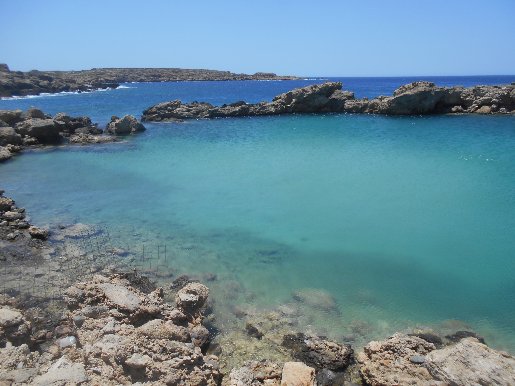
Surrounded by rocks, it’s usually sheltered, and with access to the sea, though only through a narrow/shallow channel, it offers a safe haven for small craft.
The famous 17th c. monastery is easily located a little further along the main road, and with its situation and long history, well merits a visit. A small entry fee gives access to the 98 steps, church, temples, a small museum and dramatic views over the coastline. The elusive golden step may not be apparent, as legend holds that it was sold by the Patriarchs to solve economic problems during the Turkish era ….
Towards Elafonisi, c 400m after the junction, is a side turning to Aspri Limni, or White Lake. Look for signs, which eventually lead to a shallow lagoon, almost a miniature Elafonisi, but without the crowds or pink sands.
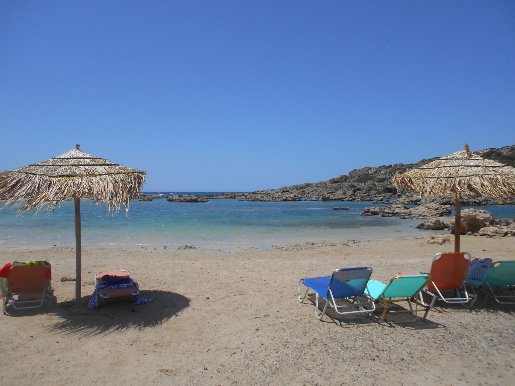
A few sunbeds and parasols appear in summer, but no other facilities. This is a Natura 2000 protected area, the westernmost habitat of the endangered palm tree Phoenix Theofrasti, more usually associated with Vai and Preveli, and outside Crete, is only found in SW Turkey. The ‘lake’ is salt water, but access to the sea is only by scrambling over sharp rocks to the NW.
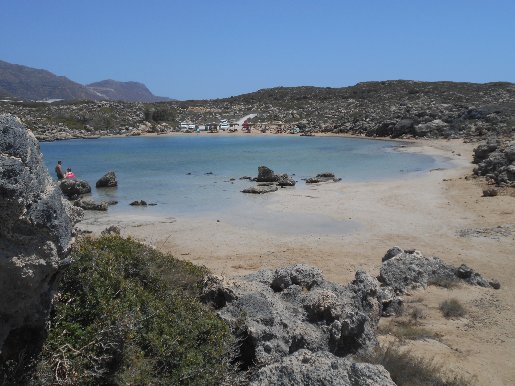
Our fourth destination is SW from here, on a 2km track from Batilas House, rough at first, becoming rougher, until it ends at the little harbour of Agios Nikolaus.
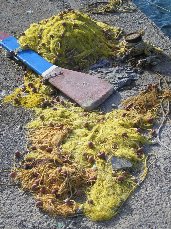
There’s little here, a tiny church, usually some fishing boats and small pleasure craft, possibly sheltering from the strong winds and westerly gales prevalent in this corner of Crete.
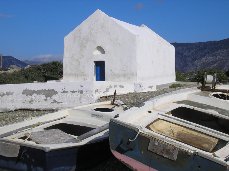
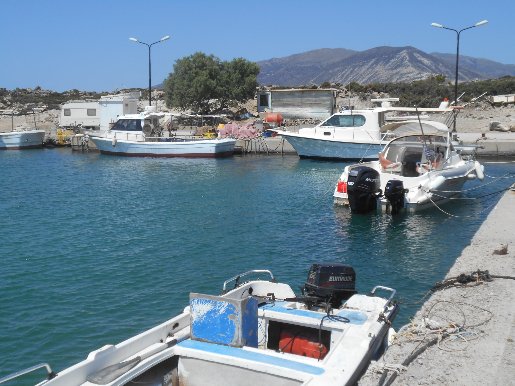
A path linking these four places, keeping to the coast wherever possible, would undoubtedly become a popular trail, but as yet none exists. They are all of course, connected by the sea, and, it follows therefore, by kayak. So that’s what we did ….
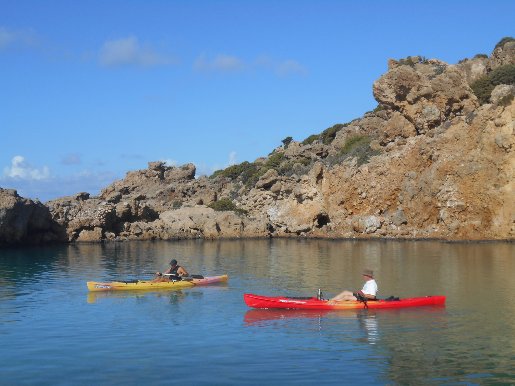
A shipping forecast of “Winds Light, becoming Moderate, westerly 4” merited an early drive over to the west coast, where we launched our kayaks into the still waters of Voulolimni.
A gap just a couple of metres wide gave ingress to the open sea, and to the inlet below Chrysoskalitissa, sunlight shining on the monastery walls high above us. Between here and Agios Nikolaus, 2.5km away along a low but rugged inaccessible coastline, no landing is possible.
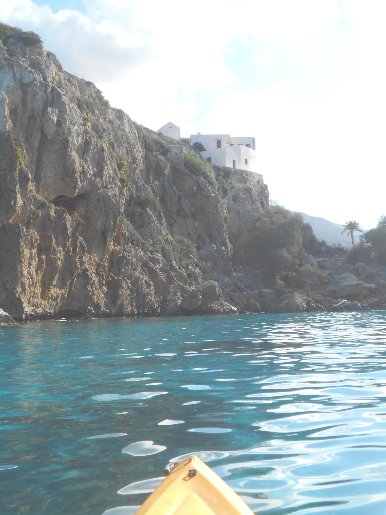
Off Aspri Limni, waves rolling in over shallow rocks provoked swells and concentration, before we rounded another low headland, and easily into the sheltered mini-marina of Agios Nikolaus.
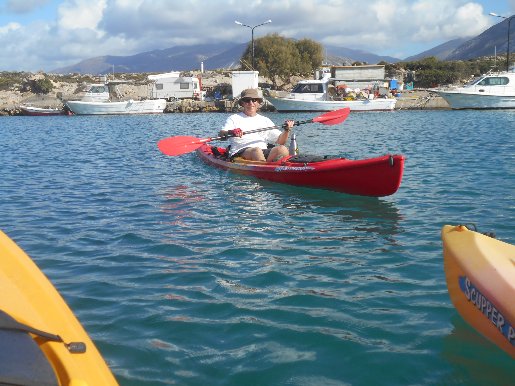
Nothing stirred, the only occupants two elderly male goats. We re-fuelled, needing energy and liquid for the return journey.
A one-time ambition to kayak from here to Elafonisi has long been abandoned, after reading of the many nautical disasters hereabouts.
The worst of these was on the night of 22nd February 1907, when the steamship SS Imperatrix, out of Trieste and heading through the Suez canal to Bombay carrying a cargo of sugar, crew of 120 and 20 passengers, hit rocks on the NW extremity of Elafonisi ‘island’. 38 of the crew abandoned ship and were drowned, later buried in an unmarked grave on the island, others reached land and raised the alarm. In stormy seas, not until the morning of the 24th were survivors brought ashore from the wreck, assisted by local villagers and monks from the monastery.
So we paddled northwards, and a pleasant 3km directly back into Voulolimni, hard to identify from afar, but with the distinctive white chapel of Agios Panteleimon the landmark to head towards. As predicted, winds were rising and the sea becoming “lively” as we loaded the kayaks. Soon the mid-November afternoon would brighten in the west, and slightly weary kayakers would enjoy both rest and a cold beer ….


Recent Comments